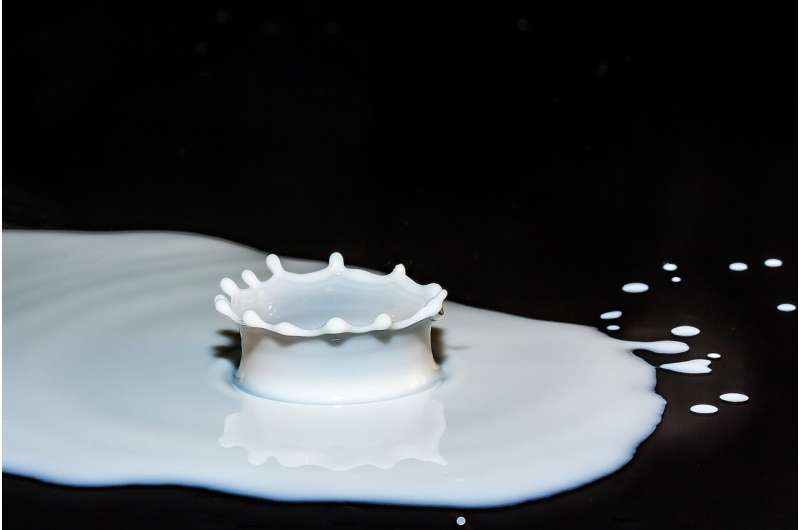Credit: Pixabay/CC0 Public Domain
Scientists develop a novel and direct approach based on surface enhanced Raman spectroscopy (SERS) to detect the antibiotic tetracycline (TC) and pesticide dicyandiamide (DCD) contaminants in milk samples. This work was done by Prof. Huang Qing and his team at the Institute of Intelligent Machines, Hefei Institutes of Physical Science.
In this work, the team fabricated highly sensitive transparent SERS substrate with silver nanoparticle decorated arrays, so that TC and DCD could be measured directly by placing the substrate on the contaminated milk droplets.
According to the team, the detection could work even with TC and DCD concentrations as low as 10-9 M and 10-7 M, respectively.
Additionally, the team used DFT to calculate the Raman spectra of the chemicals, with which researchers could identify SERS bands of TC (1312, 1272, 1067, 702, and 517 cm-1) and DCD (1129, 933, and 496 cm-1) in more complex or practical cases.
This work has therefore demonstrated a convenient and promising approach that may be useful for not only tracing the contaminations or other small molecules in milk products at very low level but also probing other contaminants in other opaque solutions or foods.
More information: Muhammad Muhammad et al. Surface-Enhanced Raman Spectroscopy for Trace Detection of Tetracycline and Dicyandiamide in Milk Using Transparent Substrate of Ag Nanoparticle Arrays, ACS Applied Nano Materials (2020). DOI: 10.1021/acsanm.0c01389
Provided by Chinese Academy of Sciences
























